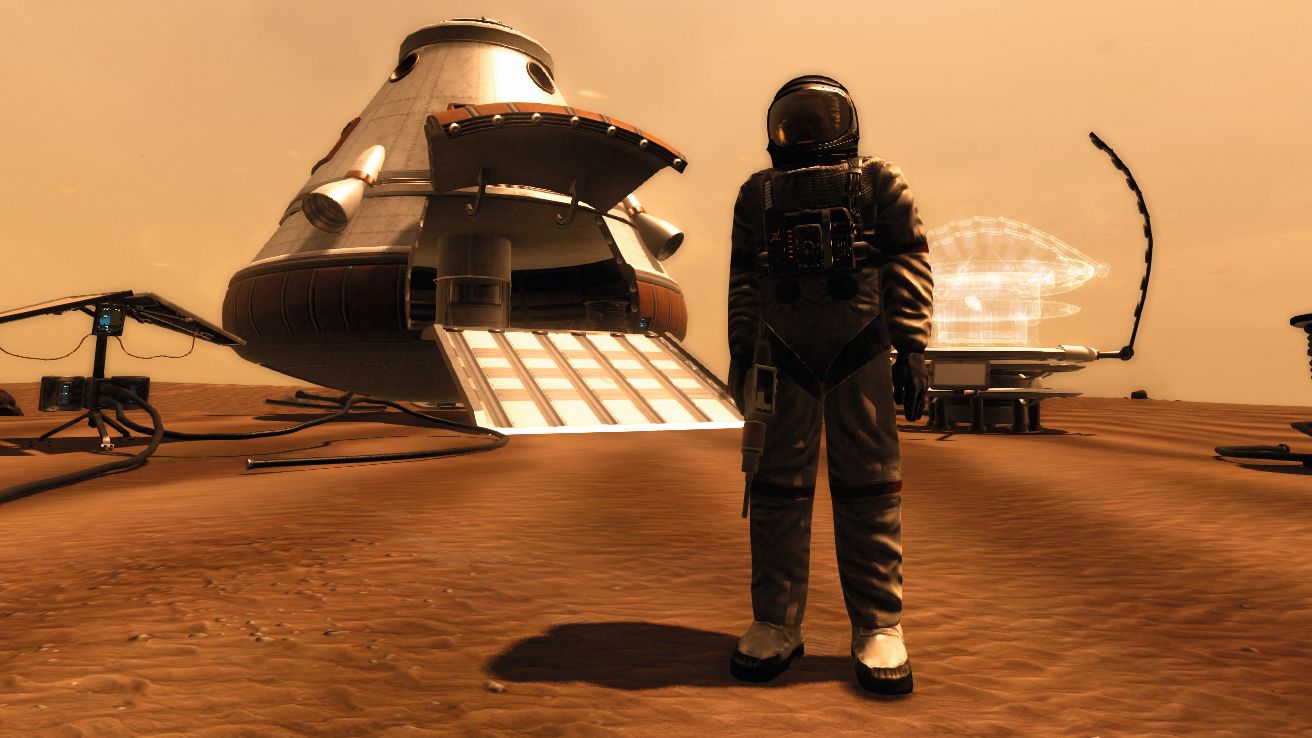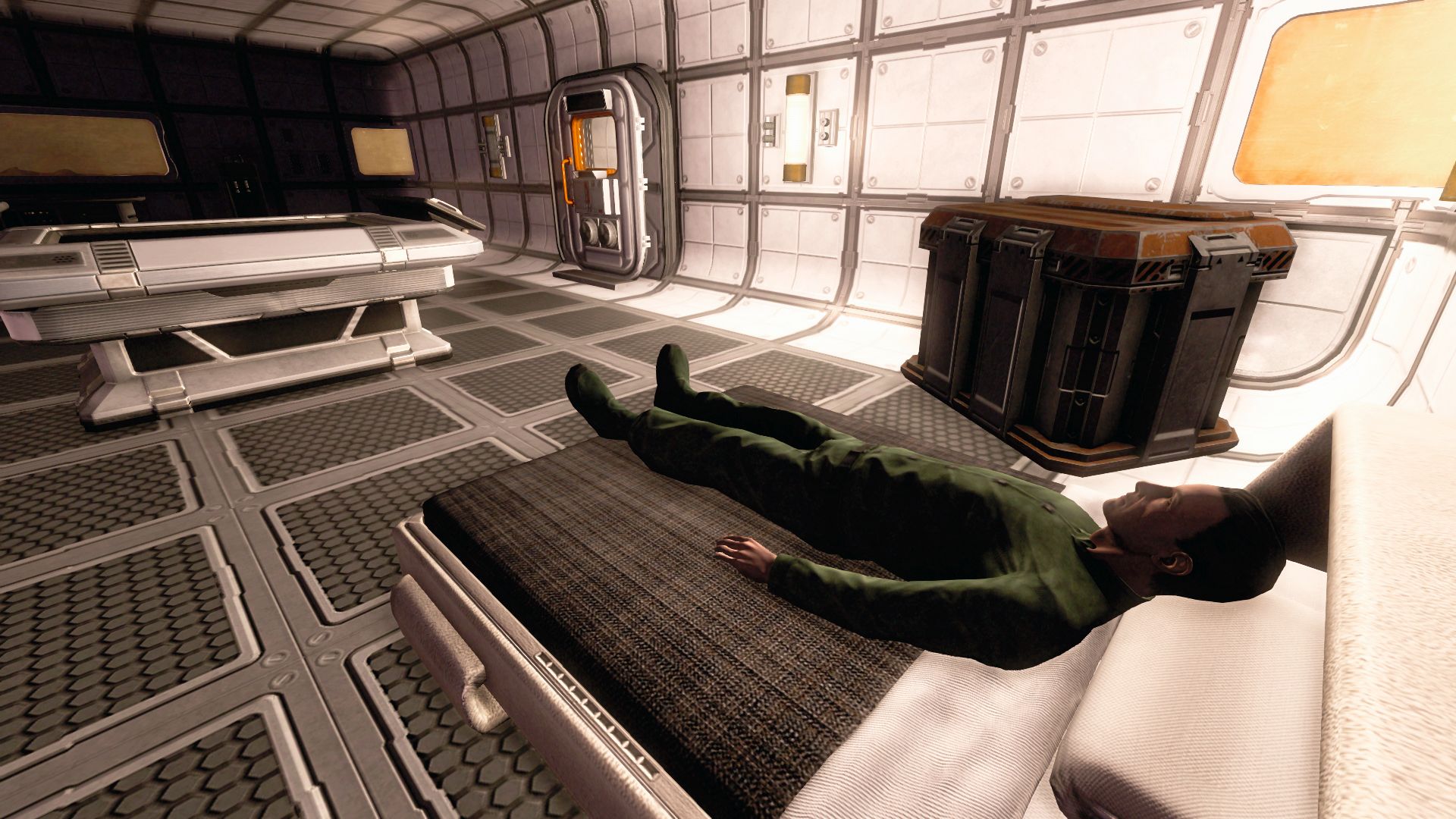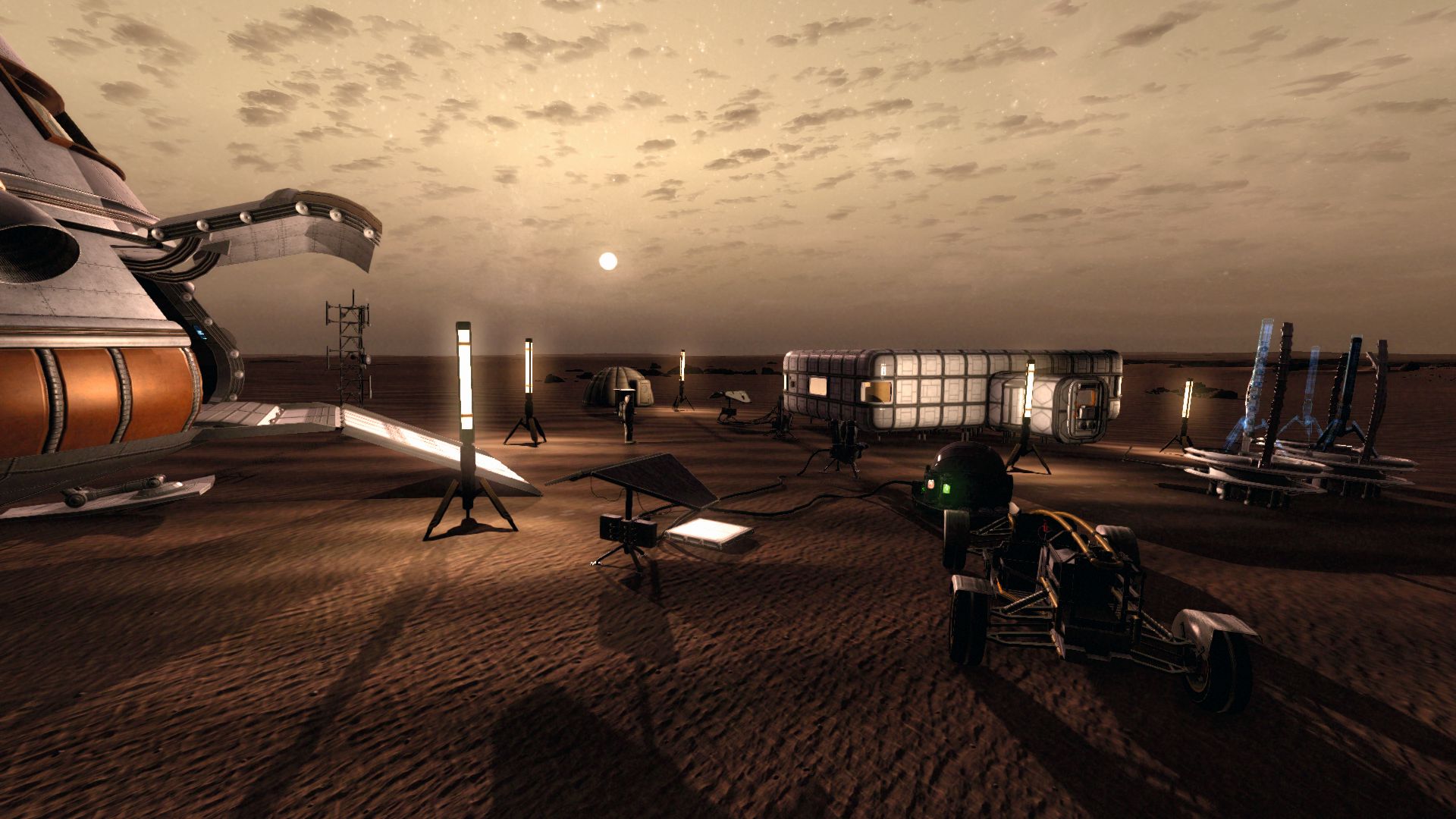Building a mighty space base in Take On Mars

What follows is a gruelling three hours of printing out corners, walls, floors and other parts, then painstakingly slotting them together, piece by piece, to create my new home. It’s a slow, laborious process that would have been a lot easier if my team hadn’t flown back to Earth and left me here to die. I begin by driving metal platforms—the foundations of the building—into the Martian soil. Then I clip on floors, walls, windows, power points, and, finally, the roof. To speed things up I print out two additional 3D printers and make sure they’re constantly churning out parts as I build.
Before I snap on the last few bits of wall, I print out everything I need for the interior: a bed, a couch, storage crates, a toilet, a table to work on, two hydroponic stations, and a water dispenser. Then I toss them through the gap in the wall and seal it up. The last step is the airlock, which I’ll need to keep the room pressurised. I build a small corridor, equip it with two suit holders, and install a pair of heavy airlock doors. Done. I step inside, close the airlock, and hold my breath. Did it work? ‘EXT. SAFE’ blinks on the HUD in reassuring green text, indicating that I can safely remove my suit. I did it!
It’s not much, but it’s a vast improvement over the lander. If I had help I could have built a base with multiple rooms, but for now this will have to serve as both my living quarters and my science lab. I can easily expand later. I arrange the furniture and equipment and end up with a pretty swish-looking pad. I move some of the freeze-dried meals, emergency oxygen tanks, and backup suits from the lander to the hab and watch a gorgeous Martian sunset as I eat dinner. As another solar storm rages outside, I settle in for the night. Tomorrow I can start to sort out the water situation.
Mars may look dead, but the air and soil are rich with resources I can harvest to keep myself alive. First, water. I print out a topsoil extractor, hook it up to a solar panel, and plug in two resource canisters. Then I build a refinery while I wait for the canisters to fill. The yield is low, but by processing the collected soil in the refinery I can extract fresh, drinkable water. I fill a few canisters and store them safely in the hab, plugging one into the water dispenser. I’ll make sure the topsoil extractor is running constantly to keep the water flowing. That’s one problem solved.

I still have a decent supply of freeze-dried meals, so I can wait a while before I have to think about growing food in this desolate place. In the meantime, I tackle a problem that’s been bugging me ever since I finished the hab. In the process of building it I accumulated a massive pile of junk. Mostly parts I printed out by mistake, including a third airlock door. I keep bumping into it as I walk around the site, and it looks messy, so it’s time to get rid of it. I refuse to live in in squalor.
I use the 3D printer to construct a cargo truck. It’s big and slow, but has a massive bed for storing and transporting stuff. I spend some time gathering all the bits of junk strewn around the base and load them on the back. Then I drive about half a mile away and unload it. I did consider throwing it in the Victoria crater, but I don’t think NASA would appreciate me using an area of scientific interest as a garbage dump. I return to base, and it looks much neater. Satisfied that I’ve had a productive day, I eat some steak—again—and retire for the evening.
When I wake up, a dust storm is raging outside, but it doesn’t look too severe. One of the supply crates in the lander has bags of potato seeds, so I strap my suit on, brace myself, and step outside. Jogging over to the lander I pick up the seeds, grabbing a canister of freshly-harvested topsoil on the way back. The storm has covered my solar panels in dust, which I’ll have to clean later. Back in the safety of the hab, I plug the soil can into one of my hydroponics stations, along with a can of water, and plant the seeds.
Keep up to date with the most important stories and the best deals, as picked by the PC Gamer team.
It’s not long before five healthy potato plants spring up. Just so you know, Bowie: there is life on Mars.

I spend the next few days harvesting resources, clearing up junk, and tending to my potato plants. I expand the hab with a small room to put the toilet in, because having it inches from my bed just feels wrong. I’m beginning to adjust to life on Mars, despite the solitude. I keep myself sane through routine, occasionally going for a slow drive around the Victoria crater to entertain myself.
Before long I have my first crop of potatoes. I pick some to eat, and save the rest for replanting. It’s taken a while, but I’m finally self-sufficient. I have the means to reliably produce water, food, oxygen, and power. It won’t be the easiest five years, but I should be able to get through them.
I’ll keep expanding the hab in the coming years, with more hydroponics stations, more resource extractors, and more rooms. But for now I have everything I need to survive. Who knows, maybe NASA will realise I’m still alive and mount a rescue mission? Then I might only be here for two years—the length of a journey to Mars—instead of five. Either way, I’ve accepted my fate. I’m going to be here for a very long time, so I might as well get comfortable. Now, if you’ll excuse me, I have some potatoes to harvest.

If it’s set in space, Andy will probably write about it. He loves sci-fi, adventure games, taking screenshots, Twin Peaks, weird sims, Alien: Isolation, and anything with a good story.


